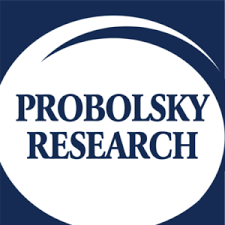 As a public opinion and market research firm, our work takes us all over the country, giving us the benefit of seeing the latest tactics of public agency communicators. Let’s dive into the trends we are seeing.
As a public opinion and market research firm, our work takes us all over the country, giving us the benefit of seeing the latest tactics of public agency communicators. Let’s dive into the trends we are seeing.
Harnessing the Power of ChatGPT, Bing Chat (and maybe Bard)
When Brie Ann Colman, Comms Specialist with Placer County Water Agency, recently posted on the CAPIO Facebook group for anyone who has used ChatGPT in their work, I reached out to talk about how we’ve adopted its use. I told her I was sure that Jesse Saich with El Dorado Irrigation District was already using it too. I hadn’t spoken with Jesse about it, but he is an innovator. Reaching out to him later, I found out I was right.
Our clients find that ChatGPT yields about 70% of the imaginative and descriptive quality that outreach professionals might be looking for. It’s then your job to take it the other 30% of the way. That’s a pretty impressive productivity improvement.
Here is what we have seen our clients do with ChatGPT:
- Draft press releases and standby statements with minimal details input
- Create Q&As and FAQs
- Create social media calendars, for a whole month at a time – don’t forget to ask the AI to give you recommendations for visuals to include
Maximizing Impact with Online Advertising
We see the use of hyper-targeted online ads regardless of budget, whether it’s $500 or $500,000. The flexibility you get with online platforms is unbeatable in terms of reach.
Here is how we see the public sector using targeted online ads:
- Set clear goals: Establish measurable objectives for your advertising campaign, like increasing website traffic, raising awareness of a specific initiative or driving attendance to a community event. By setting clear goals, you can better allocate your budget and track the effectiveness of your campaign. Most importantly, the data proves they work so you get buy-in for more spend next time.
- Target your audience: Google and Facebook Ads offer sophisticated targeting options that allow you to reach specific demographics, locations, interests or behaviors. This ensures that your ads are seen by the most relevant audience, increasing the likelihood of engagement and reducing wasted ad spend. Using unique audiences (lists that you upload) is important too. If you don’t know how to get a complete list of your constituents, ask your favorite marketing firm or pollster. We can get it within minutes, for pennies per record.
- Test and optimize: To maximize your return on investment (ROI), continually test different ad creatives, targeting options and bidding strategies. Use platform analytics tools to identify which elements are driving the best results and refine your approach accordingly. This iterative process allows you to optimize your campaign’s performance and ensure that you’re making the most of your budget.
- Leverage organic content: In addition to paid advertising, make sure to maintain a strong presence on social media through organic content. This not only helps to build trust and credibility with your audience but can also amplify the reach and impact of your paid campaigns. Don’t worry if you get limited engagement. When a crisis hits, your long posting history will be an important resource for the media and the public.
Embracing Video: Competing in a Visually-Driven World
Video is how we consume information now. The ubiquitous use of TikTok, Instagram Reels and YouTube means you are not going to be seen unless you play the game many others are already in. You need up-to-date video content that is made for each platform. To keep up, governments need to either develop strong creative, video editing and production skills in-house or bring in outside talent to consult.
To excel in video content creation, consider the following strategies:
- Embrace storytelling: Video offers a unique opportunity to tell captivating stories that resonate with your audience. Use video to showcase the people, places and projects that make your community special. Focus on telling stories that inspire, educate or entertain.
- Prioritize quality: While it’s true that you’re competing with a vast array of content, it’s crucial not to sacrifice quality for quantity. Invest in the equipment, software and training to ensure that your videos look and sound good (they don’t need to be “pro”). This includes cameras, microphones, lighting and editing software.
- Experiment with formats: There’s no one-size-fits-all approach to video content. Explore different formats and styles, like short-form videos for TikTok and Instagram Reels, long-form content for YouTube or Facebook or live-streaming events and meetings. By diversifying your video offerings, you can appeal to a broader range of audience preferences and maximize engagement.
- Be authentic: Don’t strive for perfect. Save the polished content or Hollywood. It’s more important to maintain an authentic voice that reflects your organization’s values and personality. Let your community see the human side of your work that will engender genuine connection.
- Invest in talent: If your team lacks the skills or resources to produce quality video content, consider partnering with external consultants or hiring dedicated staff members with creative and video production expertise. Just like outreach based on polling makes your dollars go further, having the right talent to create compelling content is going to be the most efficient use of your resources.
Data-Driven Storytelling: Turning Numbers into Narratives
Translating data into compelling stories is our favorite work because we get to roll up our sleeves with creative communicators and marketers.
Here is what we think makes the process go well:
- A statistically valid poll will help you determine the most relatable messages by translating numbers to real-world experiences, helping your audience understand its relevance in their lives. Instead of a broad conservation message, such as “use less water,”a poll can identify a specific, relevant metric that your community can connect to, such as: “Fixing one small outdoor leak can save 3,000 gallons a year, or something like 180 showers!”
- Use visualizations: Present information in visually appealing and easy-to-understand formats,. It could be charts, graphs or maps–but all work together to capture your audience’s attention. Focus groups are great ways to identify the best visuals for your audience.
- Keep it simple: Go for the highest efficiency messages. It is easy for communicators to want to provide all possible details. But keep in mind, we get very limited attention from our audience. Instead, go bold.
Breaking Through the Noise on a Budget
Public agencies face a unique challenge: your public is highly distracted. Unlike consumer brands with seemingly limitless budgets, public agencies have limited resources to allocate to communications efforts. But this doesn’t mean you can’t find ways to break through the advertising and messaging noise and create a meaningful connection with your community.
By leveraging the power of your agency, your physical assets and the people who make your organization function, you can create great material. Here is some of what we are seeing from agencies making the most of their resources:
- Showcase your assets: Highlight the interesting facilities, programs, trails, open spaces and other unique aspects of your agency in your content. By showcasing these assets, you can generate curiosity and interest while educating the public about the important work you do.
- Go behind the scenes: Pull back the curtain on government operations by offering a glimpse into the day-to-day workings of your organization. This might involve sharing videos of complex machinery in action, touring facilities, or highlighting how “Ralph in accounting makes sure all the bills get paid on time”. You might think watching a traffic engineer doing a plan check is boring, but since the public never gets to see it, they might find it interesting.
- Humanize your agency: Introduce the public to the people behind the counter at City Hall, or those who keep your parks clean and your streets safe. By putting a human face to your agency, you can foster stronger connections with your community and build trust in your organization. Our research shows that the hard hat and pocket protector-wearing crowd are much more relatable than the suites. Put a wide variety of your team out front.
What did I miss? I’d love to hear from you.
By Adam Probolsky of Probolsky Research. Adam Probolsky is a pollster and data scientist with the woman and Latina-owned Probolsky Research. Find Adam on Twitter at @AdamProbolsky.





